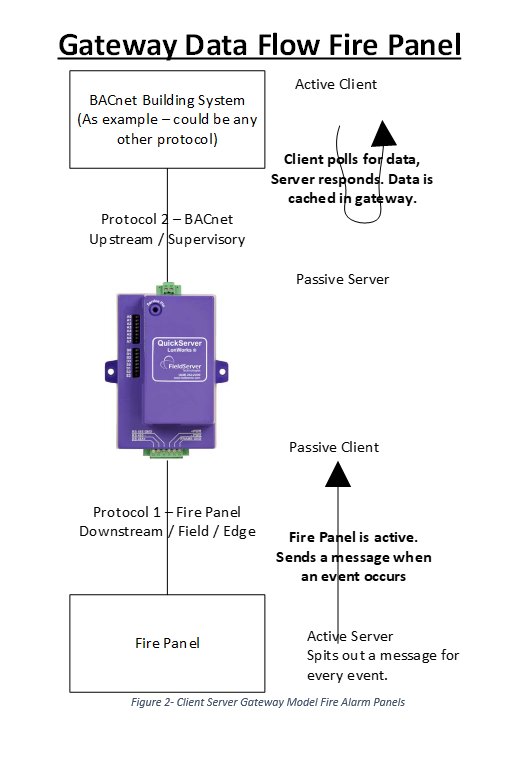Understanding the Capabilities and Limitations of the I/NET Gateway
Introduction
A gateway has two sides - Protocol 1 (example: Modbus) and Protocol 2 (example: BACnet)
With protocols like Modbus, BACnet, Lonworks, GE EGD, FINS, and Ethernet/IP, we often program gateways using the data flow model shown in figure 1 (seen below). The field device with these protocols is most commonly, a server. So, the gateway uses the field protocol (also known as the downstream or edge protocol) as a client – reading data from the field device. The data is stored in a cache in the gateway. We then expose this data using a 2nd protocol configured as a server, thus allowing a remote system to poll for the data using this 2nd protocol.

TAC I/NET and Fire Alarm Panels Need a Different Data Flow
In the case of fire panels, gateways are commonly connected to the printer port of the fire panel. The gateway must accept the messages sent by the fire panel. In such a case, the fire panel is called an active server – server in the sense that it produces data. Active in the sense that it sends this data without being asked for it.

I/NET Data Flow for Integration.
The Gateway is a server on both sides. Someone has to go into one or more I/NET controllers and program them to read the inputs from the gateway (data coming from BACnet, as an example) and write the outputs to the gateway so that it gets to the BACnet system.
Why is it like this? Because, to the I/NET system our gateway looks like you have connected 32 MR units with ins and outs and to the 7793 you have connected the gateway to. A controller must read the inputs and write the outputs as if was talking to I/O on the MR's. This gateway has been successfully sold, installed and used in projects using I/NET over many years.
Said another way – The gateway connects to a 7793. Connect to the port that the MR modules connect to. To the I/Net system the gateway looks like 32 MR units. You program controllers to read or write data the points in the gateway as if you were communicating with an MR.

Protocol = TAC I/NET 2000



